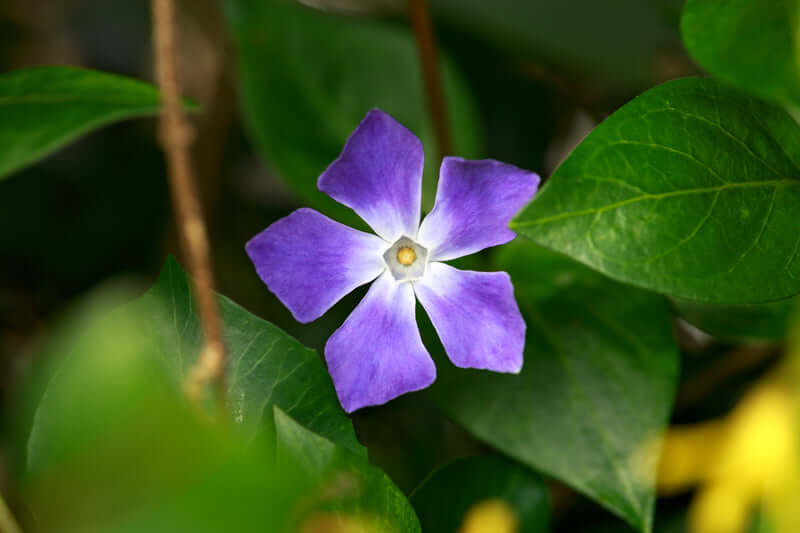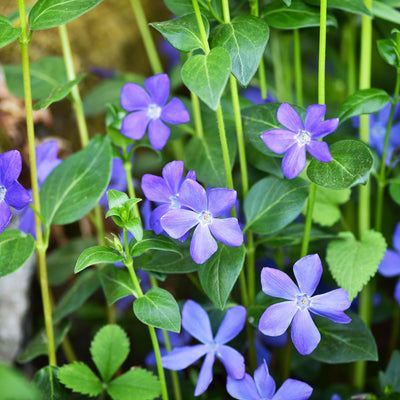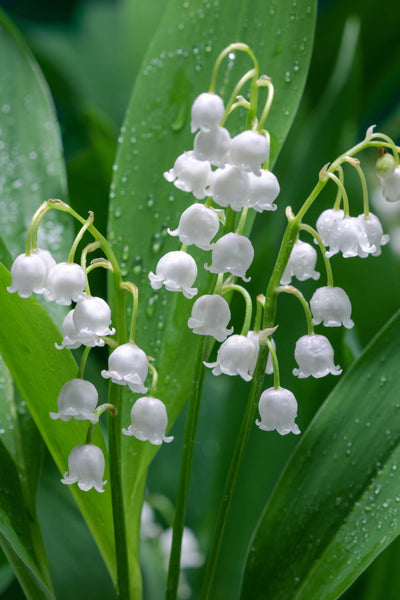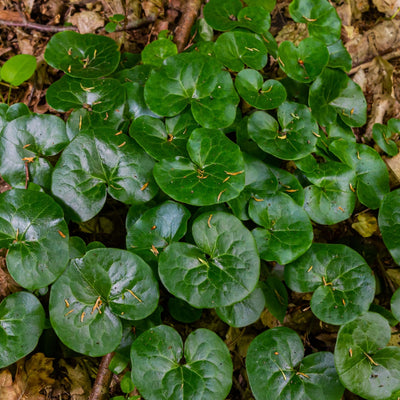Spring is the ideal season for planting vinca minor, a ground-cover plant that thrives in partial shade. We'll walk you through selecting the perfect location, preparing the soil, and creating optimal conditions for its growth. By leveraging its benefits like weed suppression and erosion control, you can enjoy a thriving vinca minor with minimal care.
Whether you have poor soil or want to enhance your garden, vinca minor is a resilient choice. We'll also address common concerns such as pest management and controlling its spread if it becomes invasive.
Get ready to discover the secrets of planting vinca minor!
Planting Vinca Minor for Spring Ground Cover
Finding the perfect location helps your vinca minor thrive. This versatile ground cover plant thrives in shade and partial sun, making it a great choice for various garden spots. However, it's crucial to ensure the area receives enough light for beautiful blooms without scorching the leaves.
When choosing the right spot, consider what lies beneath the soil. Vinca minor requires minimal pruning and is resistant to pests and diseases, reducing maintenance worries. Make sure to avoid planting directly under tree roots to prevent competition for water and nutrients.
Preparing Your Garden
Properly preparing your garden soil is essential to welcome your new vinca minor plants. Ensure good drainage as waterlogged conditions are not suitable for this plant. Enrich the soil with plenty of organic matter such as compost or aged manure to provide essential nutrients.
Preparing the soil creates a favorable environment for your vinca minor to establish itself and thrive. This sets the stage for that lush carpet look we all adore in our shade gardens.
For more detailed guidance on vinca minor's growth, including its evergreen nature that helps suppress weed growth and minimize soil erosion throughout the year, check out additional resources available at TN Nursery's website. They provide in-depth information about these enchanting plants.
Vinca Minor's Growth Habits and Benefits
Vinca minor, also known as lesser periwinkle or common periwinkle, is a fantastic choice for gardeners who want to shade their gardens with vibrant colors and lush ground cover. Celebrated for its evergreen qualities, this plant adds beauty and effectively suppresses weed growth.
The simplicity of vinca minor is its charm. It thrives in partial shade, and remarkably, it can even flourish under tree roots, where few plants dare to venture. Its dark green, leathery leaves form a dense mat year-round, providing aesthetic appeal and minimizing soil erosion, making it an environmentally friendly choice.
Choosing the Right Spot
While adaptable, these plants thrive best in areas with partial sun to deep shade. It's worth noting that although vinca minor grows vigorously and quickly covers large areas with its sprawling habit, it can be considered invasive in some regions due to its robust growth rate.
To ensure responsible growth, it's recommended to check with your local extension office regarding any concerns or regulations related to invasive species before incorporating vinca minor into your landscape design.
Preparing the Soil
Before planting vinca minor in your garden, properly preparing the soil is important. You need to incorporate organic matter into the soil. This helps improve drainage, which is essential for the healthy growth of vinca minor, even in poor soil conditions.
During planting, you should use a balanced fertilizer to gently boost your new ground cover without overwhelming it. This will allow the charming blue and white blooms to attract bumblebees, promoting biodiversity within your garden.
Soil Preparation and Planting Techniques for Healthy Vinca Minor
Enhancing Soil Quality
To ensure the success of your vinca minor plants, proper soil preparation is essential. Here are some simple steps to follow:
- Vinca Minor doesn't like excessive moisture, so if your soil is clay-heavy or compacted, add sand or gravel to improve drainage.
- Boost your garden bed by incorporating compost or well-rotted manure. This improves soil structure and provides nutrients for healthy root growth.
If you're unsure about your soil or need guidance, we have a helpful guide on periwinkle vinca minor care. It offers practical tips for assessing and preparing your planting site.
Vinca Minor Planting Techniques
When it comes to planting techniques, follow these tips for success:
- Plant vinca minor about 12 inches apart. This allows room for growth and creates a dense mat of evergreen foliage for effective ground cover.
- After planting, water the plants generously. This helps settle the soil and removes any air pockets around the roots, ensuring proper water absorption.
These simple steps will give your vinca minor the best chance to thrive and create a beautiful ground cover in your garden.
Watering and Fertilization Guide for Flourishing Vinca Minor
Vinca minor, a drought-tolerant ground cover once established, requires consistent moisture during its first year to establish strong roots and spread. Here's how to care for your vinca minor plants:
Watering Vinca Minor
Water deeply once a week during the first year, allowing the soil to slightly dry out between watering sessions. This deep watering encourages deeper root growth, helping the plant withstand dry periods.
After establishment, vinca minor's watering needs decreased significantly. It can generally thrive on rainfall alone, but consider providing extra water during prolonged dry spells or extreme heat.
Fertilizing Vinca Minor
To maintain vibrant blooms and lush foliage, fertilize vinca minor appropriately:
- Apply a balanced fertilizer in early spring as new growth appears. This gives the plant the necessary nutrients without promoting excessive legginess or poor flowering.
- Additionally, an annual application of compost around the base of the plants enriches the soil and provides slow-release nutrients throughout the growing season. Avoid over-fertilizing, as vinca minor is a low-maintenance plant.
Managing Pests and Diseases in Your Vinca Minor Garden
Vinca minor is generally resistant to pests but occasionally faces issues like spider mites, especially in dry conditions. Here's how to manage pests effectively:
- Increase humidity around the plants to deter spider mites. If you notice signs of infestation, such as webbing on the plant's underside, take action.
- Integrated Pest Management (IPM) strategies recommend non-chemical approaches. Insecticidal soap or neem oil can be used as safer alternatives if intervention is necessary. Apply them according to label instructions during cooler parts of the day.
Vinca minor is rarely affected by fungal diseases due to its robust nature. However, ensuring good air circulation by avoiding overcrowding can prevent most fungal problems. If planting in previously affected areas, consider rotating crops or choosing different planting spots to minimize disease risk.
Maintaining cleanliness in your garden beds is essential for pest and disease management. Promptly remove fallen debris that could harbor insects and fungi that may attack healthy plants.
Propagating New Plants From Your Existing Vinca Minor
If you're eager to expand the beauty of your Vinca minor, a popular ground cover plant also known as periwinkle or creeping myrtle, you'll be glad to know that propagating it is easy and simple. Let's explore the efficient method of propagating Vinca minor through stem cuttings.
Choosing Stem Cuttings for Propagation
During early spring or summer, select healthy sections of your plant. Look for segments that show no signs of disease or pest damage, as robust stems are essential for successful propagation. Choosing healthy specimens increases the chances of developing strong, independent plants.
Using sharp scissors or pruners, cut a 4-6 inch length from the tip of the vine. Ensure that each cutting has at least two sets of leaves. This size is ideal because it provides enough length to sustain itself during rooting while avoiding unnecessary struggles.
Rooting Your Cuttings
Now it's time to prepare your cuttings for rooting. Dip the cut end of each stem into rooting hormone powder, a simple yet effective way to stimulate root growth. Then, plant the cuttings in moist soil either within pots or directly in the desired permanent location, if conditions permit.
Maintain consistent moisture without overwatering, and keep the cuttings in partial shade until the roots establish themselves, which typically takes about 4-6 weeks under optimal conditions.
Controlling Invasive Growth of Vinca Minor
Vinca minor, with its charming blue flowers and dense mat-like spread, can be a delightful ground cover. However, without proper management, it has the potential to become invasive and overrun your garden. To ensure that Vinca Minor beautifies your garden without taking over, follow these control measures:
Planting Considerations
When planting vinca minor, be mindful of its vigorous growth habits. Choose locations away from large areas where you don't want it to spread. While it thrives in shady areas, such as under trees or covering bare spots, installing physical barriers like edging materials can help confine the plant to desired sections.
Regular Maintenance
Regular maintenance is essential to keep vinca minor in check. Trim back the runners before they root into new territories. If the invasion is more extensive, consider using environmentally friendly options like neem oil or insecticidal soap to control pests. Only resort to systemic herbicides if necessary, and always prioritize environmentally friendly alternatives.
Preventing Uncontrolled Spread
To coexist harmoniously with vinca minor, it's important to observe and intervene diligently. While it provides benefits as an evergreen ground cover, such as weed suppression and soil erosion prevention, managing its growth is crucial to prevent it from spreading beyond its intended boundaries.
Varieties of Vinca Minor To Consider For Your Garden
When planning your shade garden, choosing the right variety of vinca minor can greatly impact your landscaping. This evergreen ground cover, also known as lesser periwinkle or dwarf periwinkle, offers several captivating varieties to suit your preferences.
Traditional Blue-Flowered Form
The classic choice for many gardeners is the traditional blue-flowered vinca minor. Its dark green leathery leaves provide an attractive backdrop for delicate blue flowers that bloom in early spring, adding vibrant color to your garden during the spring season.
White-Flowered Cultivars
For a unique touch of sophistication and brightness, consider cultivars of vinca minor with white flowers. These varieties bring an air of elegance to shaded areas and can be a refreshing departure from the traditional blue.
Varieties With Gold Leaves
If you're seeking texture and contrast, minor varieties of vinca with gold leaves are worth considering. These plants thrive in partial sun or deep shade and form a dense mat over large areas, transforming bare spots into lush landscapes. Not only do these varieties enhance the beauty of your outdoor space, but they also serve practical purposes. Their growth suppresses the development of weeds and effectively minimizes soil erosion.
It's important to note that while some types of vinca minor are considered invasive due to their rapid spread rate, they can still be valuable assets in your garden when grown with proper control measures.
Limiting their area using barriers around tree roots can help you harness the benefits of these plants without allowing them to become a nuisance in your garden landscape.
Plant Your Vinca Minor Today
Planting vinca minor can bring lush, evergreen beauty to shady areas in your garden. Take the first step by selecting the perfect location and carefully preparing the soil. Remember to provide balanced fertilization and proper watering techniques to ensure their thriving growth.
But don't forget to manage their potential invasiveness wisely. Embrace the variety of lesser periwinkle, greater periwinkle, or those with gold leaves to create a stunning color palette in your garden.
Plant vinca minor and experience the joy of a thriving and beautiful landscape. Start planting vinca minor today and transform your garden into a captivating oasis!
Companion Plants For Vinca Minor




